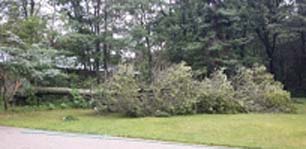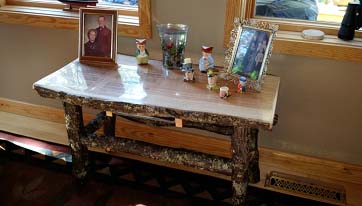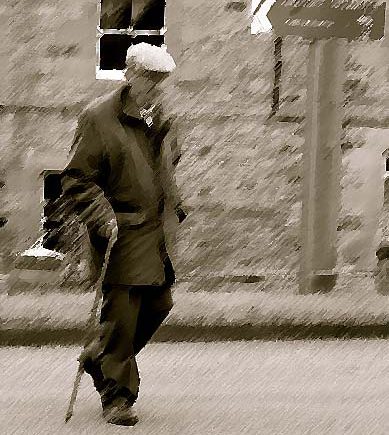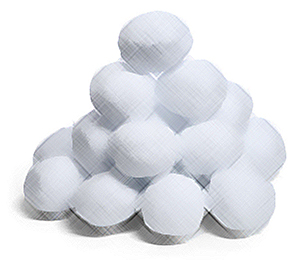This is the story of the 95 year old oak that fell in our yard. This one goes with the keepsake table I made for Judy to pass on to Royce. I also made a similar second keepsake table for Judy to pass on to Steven, with the same stories. Both tables hold folders with these stories in them, each one holding information on their own families.
This is a small glimpse of how it was in the lives of Judy’s dad Bob, and her mother Hilda, when they were both 3 years old. The years were 1920 and 1925. The oak was a seedling in 1920, and came down in a storm in 2015. Out of this oak came these two tables.

Nature has yet again provided me with some material with which to work. This is the second time that a tree has fallen in our yard. The first one was the pine tree that fell after 91 years of standing guard at our homestead in northern Minnesota.
The second one, a 95-year-old oak, fell in the night of July 24, 2015. This tree was a seedling in 1920. Out of this oak, came a keepsake for Judy and her family.
This time we travel back in time to when Judy’s parents were children. Hilda was born in 1917, and Bob was born in 1922. The year the tree was a seedling, Hilda was a three-year-old, and the year Bob was a three-year-old, the tree was five years old. When I read the growth rings, I can see how big the tree was when they were both ten, how big it was when they were both 20, 40, 60, 70; how big it was when Bob passed in 1998, and Hilda passed in 2012.
Each ring in the tree has its own story. Each ring is a definite year. We start at the outer ring, 2015, and time travel backwards, and when we arrive at the seedling in the middle, we arrive in the year 1920. From 1920, let’s then start traveling back to the present and make some stops along the way. In the 29th ring, Judy was born. In the 48th ring, Judy’s son Royce was born. In the 68th ring Royce and Jenny were married. Their son Andrew was born in` the 71st ring, and their daughter Lauren was born in the 72nd ring. In the 52nd ring, Judy’s son Steven was born. In the 75th ring on May 26th, Judy and I were married. And so it happens that the very last ring in the fallen tree in 2015 is our 20th wedding anniversary.
Where are you in the rings of this fallen oak? What stories do the different rings tell about you? The span of this tree is from 1920 to 2015. In which birth ring were you born? I was born in the 26th ring. All our stories are intertwined in the growth of this tree. Each ring is a year in our lives, and just like this tree, we add to our years, one ring at a time, add stories of ourselves, and reflect on our lives when we count the years that have passed, and dream of the rings of our years yet to come.

It was a cool, fall day in 1919, on a piece of land that is today our homestead in northern Minnesota. An acorn falls out of a mother oak tree, bounces a couple of times, and lands on the moist, cool ground. The squirrels are gathering acorns for the winter, but this one is overlooked, and is buried by the cold winter snow. There it laid, and on a warm day the following spring, the acorn sent out an exploratory, green seedling, a child of nature, bathing in the warmth of the sun.

It is early morning on a spring day in 1920, and a three-year-old girl runs out of the farmhouse, closes her eyes towards the sky and bathes her face in the warmth of the sun.
She smiles, squeals in delight, and runs, chasing chickens around the yard, her bare feet slapping the ground, stirring up the dust. She stops, dust settling around her feet, sticks her short arm through a weather-worn wooden fence and scratches the forehead of a goat, and gets a lick on her hand in thanks. She giggles, and takes off after the chickens again. She runs, arms stretched out in front of her, behind the scattering chickens. It’s not so much about catching a chicken as the chase.
Hilda’s mother Matilda is in the doorway, leaning her left shoulder on the door frame, her arms folded in front of her. A flowery colored apron hangs from her waist, dusted white with flour from baking bread. There is a sweet smell of baked bread emanating from the house. Matilda pinches her lips shut and take in a deep breath, her nostrils savoring the familiar smell of freshly baked bread.
A loving smile resides on her face as she watches her daughter prance in delight around the yard. She sees the laughter on her daughter’s face, a trait that will stay with Hilda the rest of her life.
In a field next to the farmhouse their horse Shorty is pulling at some green grass covered in morning dew. He stops his chewing, lifts his head to see what the commotion is all about, and noticing nothing of consequence, he bows his head down again and continues his morning feeding.
Hilda’s father, Jacob, is in the barn studying a newly acquired contraption, a John Deere tractor that will replace their horse Shorty. What is this world coming to, he thinks inwardly, as he rests a weathered hand on the cold, green and yellow steel beast. There is no warmth here, he thinks, no life within this iron beast, no blood flowing to keep its flanks warm, just a cold touch to the hand. The eyes of this beast have a blank, cold stare, seeing nothing, just looking straight ahead with no emotion whatsoever. His nostrils are attacked by a heavy, unfamiliar pungent oily smell, now replaced from the all familiar sweet smell of hay. He takes a handkerchief out of his back pocket and blows his nose in an attempt to rid himself of the unfamiliar smell, to no avail. It’s in the air.
He steps out of the barn, takes in a deep breath of fresh air, puffs his cheeks and slowly lets it back out. He tilts his head slightly, and his lips form a thigh half-smile, stealing a glance at Shorty in the field. No work for him today.
He hears his daughter’s laughter in the yard and watches her running around in a cloud of dust, chickens scattering in front of her. She’s at it again, he muses, with a smile on his face. She stops the chase, and the chickens resume their clucking, and picking at the ground for the seeds that her mother had scattered in the yard.
She closes her eyes towards the sun once more, brushes her wayward curly hair from her forehead with stubby fingers, taking in the warmth of that wonderful summer morning on the farm again.
Hilda will become a great story teller, laughing all the while, like she did as a child, when she was chasing chickens in the yard.
This is your great-grandmother, or your great-great grandmother Hilda, grandma Judy’s mother.

It is spring of 1925, and a three-year-old boy steps out of the weather-beaten old house.
The doors and windows have seen their better days as tired, flaking paint clings to window sills and door frame, and patches of green grass desperately struggle for existence in the dusty yard. There is a tendril of gray smoke wafting out of the chimney, giving notice of bacon and eggs frying on the stove.
One of the trees in the front yard has seen its demise a long time ago; all that is left is a mere skeleton of bony arms and fingers pointing at the world all around.
He stands on the stoop for a while, takes a few measured steps to the sidewalk, looks up and down the street, turns around, goes back and sits down on the bottom step, his elbows resting on his knees, cupping his chin in his hands. Both his worn-out shoes are untied, holding up the frayed ends of a pair of worn-out pants, his knees looking out from ragged holes.
There is a heavy gray overcast pressing down on the neighborhood, however, the warmth of sunshine was emanating from inside of the house. His father, Leo, an accomplished musician, sat at the piano playing a soft tune that smoothed over the sharp, gray urban landscape outside. His eyes were closed, his head raised up, his body slowly swaying imperceptibly side to side as his fingers were deftly caressing the ivories, traveling up and down on the keyboard, sending beautiful tones floating through the air, filling the house, and finally spilling out of the front door where Bob intercepted them, a colorful interlude to his wandering mind.
He taps his worn-out shoe in time to the music, smiles, closes his eyes towards the sky, and bathes his mind in the warmth of the sun wafting from the interior of the house.
His home is an island of bright sunshine in an otherwise gray world that day. There is a deep feeling of satisfaction welling up within him, the feeling that all is well with the world.
Bob’s mother Eva is standing in front of the stove tending to the morning breakfast. She flips the eggs over, pokes at the bacon, puts down the spatula and takes the kitchen towel draping her left shoulder and wipes the sweat from her brow and walks to the open front door. She smiles at Bob sitting on the bottom step, the back of his scruffy hair spilling over a worn collar, and wonder what stories he will have to tell in his elder years. He is such a dreamer, she thinks inwardly. Little did she know that Bob will also become a great teller of stories.
This is your great-grandfather or your great-great-grandfather Bob, grandma Judy’s dad.

It was July 23, 2015 and the wind had been picking up all day. The wind was pushing white-caps along the lake, and the trees were swaying in time to and fro, ominous dark clouds scurrying high above. There was the promise of a storm that night. That night, the tree which was a seedling in 1920, when Hilda was three, and a seedling two years before Bob was born, was taken down by the storm at the age of 95.

We preserve the memories of our forefathers and mothers in the stories and the visions in our minds we remember and cherish. However, over time some of those memories dim in our minds, and unless we take care to pass them on, we might become a forgotten generation.
We have preserved a portion of that fallen oak in this small table. That oak will live on as this small keepsake, forever reminding us of two children who grew up at the same time as the fallen oak did, and who met and got married.
May the visions and memories of Bob and Hilda live on in our minds, where we store our precious memories, reminded by the fallen oak, all who lived and grew up at the same time.
And a point to ponder on…
This table was cut from the trunk of a fallen oak tree with a chainsaw, and as such, was not intended to be perfect, which makes this table one of a kind.
The unevenness of the table top should be considered a “distinctive individuality,” in a project that was cut with a chainsaw. I could have had the table top cut perfectly level professionally, but what would have been the individuality in that.
We all have our imperfect “distinctive individualities.” Like this table top, none of us are perfect, which makes us all unique, in a good sense.
What we do then, like seeing through the glass on this table, is to try to cover our imperfections with something perfect, yet we are transparent to all others who know and see us in our imperfect states.
However, imperfection does not mean having a deficiency. This table does not have a deficiency. It is all in how we perceive something that we look at. If we look at imperfections and perceive them as deficiencies, we only see what is wrong. However, if we look at things like this table, and other people, and see the imperfections only as characteristics in a good sense, we see the true beauty of what we are looking at. Then, and only then, imperfections in our eyes do not become deficiencies in our minds.
So let us judge what we see, be it people or things, by the beauty we see, by the beauty with which they are made, imperfections and all, all individuals, all one of a kind.
Kaj H Granholm October 23, 2015



